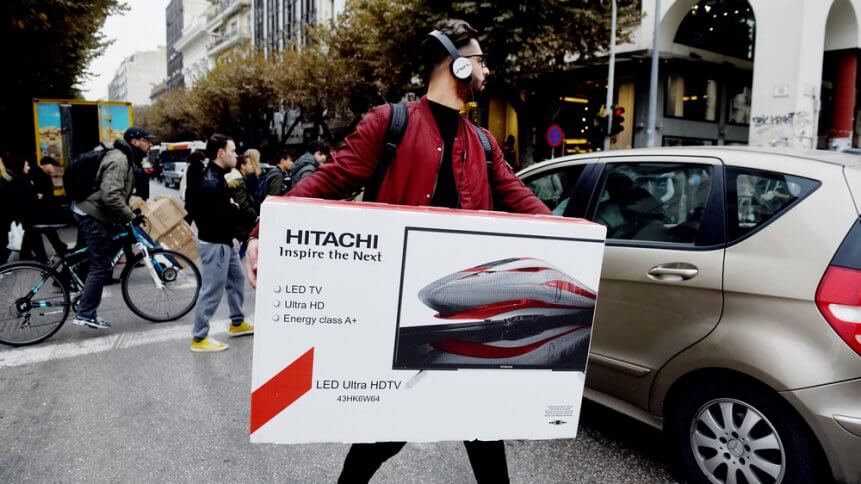Black Friday: Millennials flocking online, Gen Z heading in-store

It’s the most profitable time of the year as for many retailers, 30 percent of annual sales come from the holiday shopping season.
With consumer confidence on the rise— more than 70 percent are confident the economy will improve next year— retailers can expect to see an increase in holiday spending, an estimated growth of 5 percent from last year, according to findings in a report by OpenX.
With Black Friday and Cyber Monday fast approaching, attractive deals are flooding news feeds. Hedging their bets on the lucrative few days, some brands even started promotional campaigns during the summer.
According to OpenX, a massive 70 percent of millennials plan to shop online, and plan to spend the same or more than last year. This group of are ranked some of the most optimistic about next year’s outlook and are more likely to splurge on big-ticket items valued more than US$500.
This stat is perhaps less surprising, however, when we consider that 81 percent of millennials shop online on a weekly basis, and two out three use mobile to research gifts. However, it’s in stark contrast to predictions for how the younger Generation Z plan to spend this weekend.
Research by NDP Group found that Gen Zs are the least likely group to shop online when compared with Millennials and Generation X, and the findings are a positive sign for the revival of brick-and-mortar retail.
There is a combination of reasons for this; one is that they lack the credit cards and funds that Gen Zs have access to, but they also see shopping as a form of entertainment, and a chance to catch up with friends and family, especially when returning home from college for the holidays.
YOU MIGHT LIKE

Retailers brace for Black Friday cybersecurity onslaught
The differences between demographics show a reverse trend in which malls are more than a retail space but also a place for this generation of digital natives to reconnect with the environment and bask in the holiday vibe.
Stephanie Wissinki, a Jefferies analyst said that young shoppers are in the phase of “discovery mode,” whereby they are still establishing their opinions on brands.
“The discovery process in stores is a lot more immersive. The trial, the try-on, the socialization of having others shopping with you,” Wissinki elaborated.
In this case, retailers aiming to target these digital natives may find the integration of technology in the shopping experience an effective way to consolidate their brand presence and build towards experiential retail.
As an example, Sephora has an app that allows customers to virtually ‘try on’ makeup; Zara uses augmented reality (AR) to enhance the in-store experience, where customers holding their mobile devices in front of a select shop window will be greeted by virtual models showcasing the latest trends.
As online retailers clamor the attention of record numbers of shoppers this year, the world of physical commerce will have the opportunity to rigorously benchmark the effectiveness of their in-store experiences, and how they can hook the growing Gen Z demographic in for years to come.









